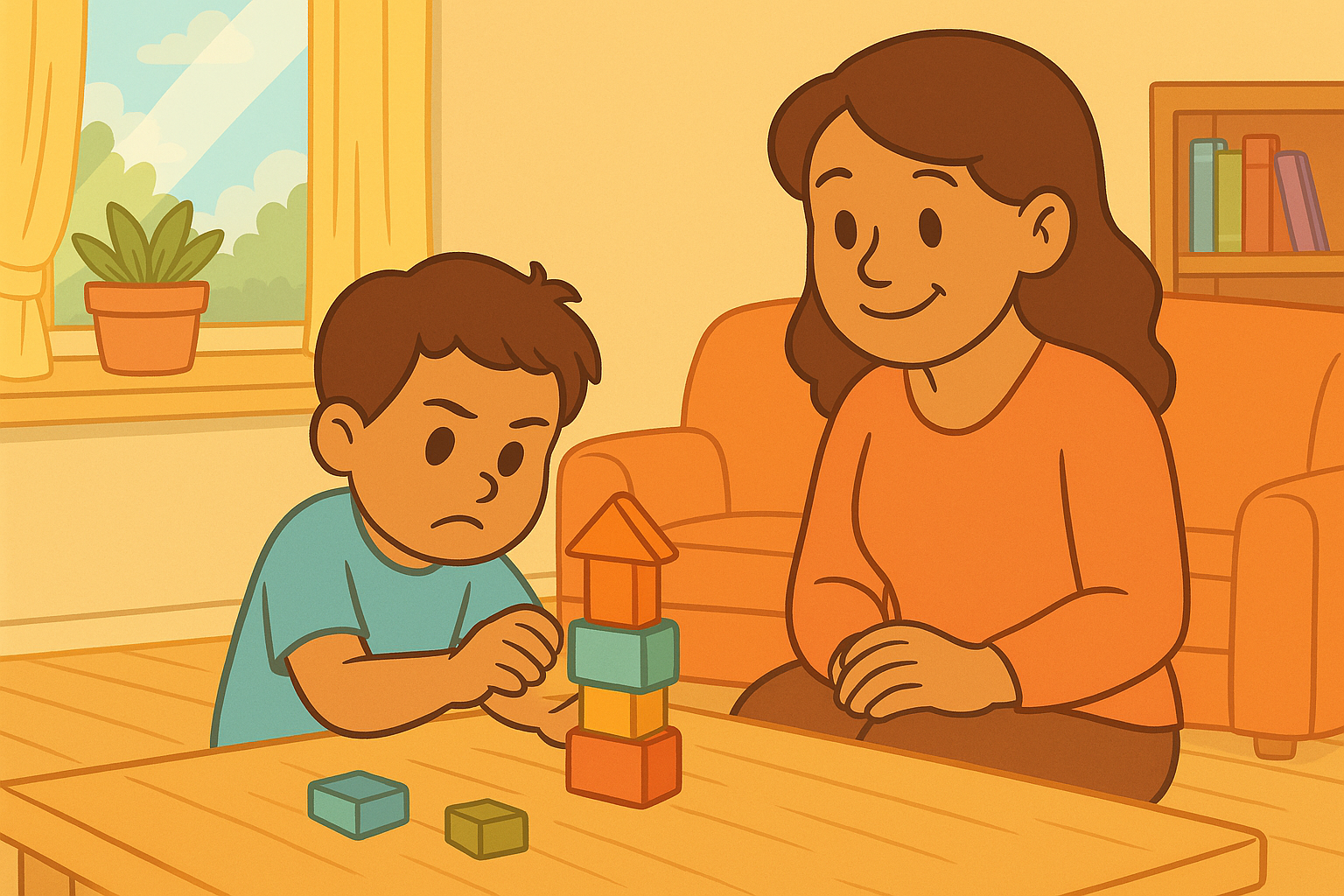Helping Kids Build Concentration During Play
Helping Kids Build Concentration During Play
Why Concentration Matters in Early Childhood
Before children can read independently, follow classroom routines, or solve multi-step problems, they need a strong foundation in focused attention.
Concentration doesn’t develop overnight — it grows moment-by-moment through playful experiences that stretch attention just enough.
When children build concentration during play, they’re strengthening:
Working memory
Impulse control
Planning
Persistence
These skills show up everywhere — from reading readiness to problem-solving, from social success to emotional regulation.
What Concentration Looks Like (and Why It Varies)
Concentration isn’t silent stillness — especially in early childhood. It looks like:
intense focus on building a tower,
repeating a puzzle again and again,
fully absorbing pretend play roles.
It’s normal for:
attention span to vary by time of day,
excitement to shorten focus,
frustration to break it.
Instead of expecting long periods of attention, we gently support it over time.
(Try this too: How to Foster Joy in the Learning Process)
Step 1: Choose Open-Ended Materials
Open-ended play invites deeper thinking because there’s no “right” outcome.
Try:
Blocks
Playdough
Magnetic tiles
Loose parts (bottle caps, pinecones, lids)
Puppets
Open-ended materials support concentration through:
planning,
problem solving,
trial and error.
(Related read: Storytelling Games That Spark Imagination)
Step 2: Honor “Flow” — Don’t Interrupt!
When your child is deeply engaged, resist the urge to:
offer suggestions,
“fix” something,
praise every tiny moment,
clean up mid-play.
Interruptions reset the brain’s focus.
Instead:
quietly observe
reflect later
support after they finish
This builds internal motivation, not reliance on adult feedback.
Step 3: Provide Gentle Challenges
Slight difficulty strengthens concentration.
For example:
increase puzzle piece count
extend block tower height goals
add storytelling prompts (“What happens after the dragon arrives?”)
Challenges should feel exciting — not overwhelming.
If frustration appears, normalize it:
“It’s tricky, but you’re figuring it out!”
(See also: The Power of Positive Reinforcement in Early Learning)
Step 4: Reduce Background Noise and Visual Clutter
Too much sensory input can shorten attention. You don’t need a silent home — just thoughtful spaces.
Try:
limiting toy options
rotating materials weekly
quiet background music instead of TV
A calmer environment invites deeper focus.
Step 5: Build Focus Through Movement First
Children concentrate longer when they move their bodies before focusing.
Try a 2-minute movement warm-up:
animal walks
jumping jacks
wiggle dance
Movement releases energy, primes neural pathways, and helps kids settle into play.
(Related read: The Link Between Movement and Early Literacy)
Step 6: Encourage Sustained Play With Narratives
Narratives create investment.
In block play:
“What does the city need next?”
In art:
“Tell me about what you’re making now.”
In pretend play:
“What happens after the dragon arrives?”
Stories stretch attention naturally.
Step 7: Model Focus
When children see you:
reading quietly
finishing tasks
working on a hobby
They internalize focus.
You can narrate:
“I’m going to finish this, then we’ll play.”
Modeling > lecturing.
Step 8: Introduce Simple Multi-Step Play Tasks
Multi-step tasks build working memory.
Examples:
“Build a tower, then add a bridge.”
“Draw a picture, then add 3 stickers.”
“Sort the dinosaurs, then line them up from biggest to smallest.”
Over time, children begin planning independently.
(Related read: Encouraging Independent Learning Through Choice)
Step 9: Celebrate the Process (Not the Product)
Sustained focus becomes joyful when effort is seen.
Try phrases like:
“You stuck with that!”
“You kept trying different ideas.”
Avoid:
“You’re so smart!”
“That’s perfect!”
We’re reinforcing attention, not performance.
Step 10: Add Calm-Down Tools
Sometimes attention breaks because emotions escalate.
Offer:
deep breaths,
squeeze balls,
glitter/calming jars,
quiet corners.
A regulated child learns; a dysregulated child copes.
(Also see: Building a Calm-Down Corner That Actually Works)
When To Expect Growth
Children benefit most when:
play is long and uninterrupted,
materials are open-ended,
adults support (not direct),
emotions are acknowledged.
Concentration grows slowly — but steadily.
Red Flags to Watch (Gently)
Consider support if your child consistently:
cannot focus on any task for more than a few seconds,
becomes dysregulated quickly during play,
avoids all structured activities,
cannot follow simple instructions.
Early support is a gift — not a label.
Fuzzigram’s Favorite Focus-Building Play Ideas
Build a block goal (“How tall before it wobbles?”)
Quiet sorting challenges (colors, sizes, textures)
Story puzzles with mini-missions
Drawing prompts (“Add 3 animals!”)
Calm sensory bins with scoops and funnels
Simple. Playful. Effective.
This content is for educational purposes and is not a substitute for professional medical or psychological advice.
Popular Parenting Articles




